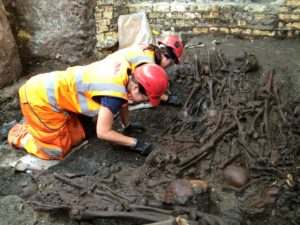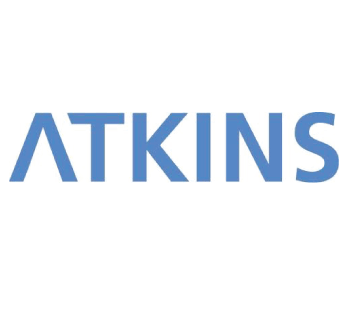Crossing London
Image courtesy of Crossrail
The Crossrail construction is the largest infrastructure project in Europe. It is taking place beneath the streets of London, while above ground it is barely noticed but hotly anticipated. Namely – Crossrail.
The figures alone are staggering – £14.8billion budget; 117km of track; 42km of tunnels up to 40m below ground; 30 refitted stations and 10 new ones; 200–240m trains; 10,000 employees (5,000 of whom have received their training at the Tunnelling and Underground Construction Academy, a college purpose-built especially for this project); and eight tunnelling machines boring an average 38m a day.
The project will connect Shenfield in Essex with Reading in Berkshire. Construction began in 2008, and is scheduled to be fully operational in 2019. In November 2015, it was announced that the surface works were half-way completed, on schedule, preparing the existing rail network for Crossrail’s opening.
The Necessity of Crossrail
London is one of the busiest cities in Europe – its transport infrastructure is of vital importance to the UK economy, and trains are the arteries of that infrastructure. Of the 1.17 million people who travel in London in the morning rush hour, 526,000 use trains, and 246,000 of them transferred to the London Underground or DLR services (light rail).
The population of the city is expected to reach 10 million by 2030, by which time the transport infrastructure, without Crossrail, would be woefully inadequate. Crossrail will increase the city’s rail transport capacity by up to 10% and bring an additional 1.5 million people within commuting distance to Central London. This in turn will allow up to 30,000 new jobs in the capital within a decade of opening, sustaining the growth of the UK economy.
Crossrail Construction: Tunnelling
The logistics of the project have been impressive. Five Atkins-designed twin bore tunnels, each 6m in diameter required eight 1,000-tonne tunnelling machines, the last of which, Victoria, was dismantled beneath the surface in August 2015 to be removed and recycled. The tunnelling itself began in the summer of 2012 and was completed in June 2015.
This would have been impressive in any environment, but was more so because the ground beneath London is not empty space; it is a warren of underground lines and stations, catacombs, sewers, rivers and even a few deep air raid shelters. At Tottenham Court Road there is a point known as “the eye of the needle” – a 7m space between the Northern Line tunnel and an escalator, which had to be navigated.
Track Construction
Much of Crossrail’s track will be built especially for it, with tracks running in parallel to existing mainline lines. Balfour Beatty were contracted to construct sections of the track, the most notable of which runs from Abbey Wood to the Plumstead portal, providing access to the new tunnels.
The tracks themselves will be 1.435mm standard gauge so that they are compatible with the existing mainline tracks. They will have a 25kV 50Hz AC overhead power line, some of which will be installed on to the mainline, e.g. sections between Reading and Heathrow, as part of the project. The trains will run at up to 160km/h overland, and 100km/h underground.
Responsible and Sustainable Construction

The tunnelling process uncovered significant archaeological finds dating back 2000 years, the most notable of which was the excavation of 3,000 skeletons from beneath Liverpool Street Station dating from the Great Plague in 1665. The 10,000 artefacts unearthed by the works will be provided to the Museum of London for archive and display.
With 4,500 buildings potentially affected by the tunnelling (of which 250 are historically listed), it was often delicate work, but required the demolition of only one listed building. Even the earth removed from the tunnelling works was transported to Wallasea Island which will become a new wildlife sanctuary. Every effort was made to ensure that the project was and is as sustainable as possible.
Rolling Stock
The rolling stock for Crossrail, the bespoke designed Bombardier 345s, will have capacity for 1,500 passengers. The trains will be 200m long and will sport wide, interconnecting gangways with three double doors on each side of every carriage. Cutting-edge technology will deliver on-board passenger information systems and real-time travel information.
The trains will have on-train energy management systems, which will control air-conditioning and lighting, and will re-generate energy back into the supply during braking. They will be lightweight and constructed using cutting-edge, energy-efficient methods.
The trains, made in conjunction with TfL in the final design phase, will be manufactured at Bombardier’s UK plant at Derby. The first trains will be delivered in May 2017. The manufacture and delivery will sustain 760 UK manufacturing jobs and 80 apprenticeships. Approximately three quarters of the contract spend will remain in the UK.
The construction of the trains hit an important milestone in November 2015 with the completion of the first test carriage, which will be used to perfect the final design and manufacturing technique. 66 Crossrail trains will be delivered in total, which translates to a total of 594 carriages. The roll-out will begin in 2017 at London Liverpool Street, and by 2019 will run full services.
Signalling
The signalling will be supplied by Signalling Solutions Ltd (SSL), Alstom‘s UK signalling joint venture with Balfour Beatty, now solely owned by Alstom, which was awarded a €54 million contract in March 2015 to design, manufacture, supply, install, test and commission the signalling control system for the line. The signalling system will use Alstom’s Smartlock interlocking technology and ECTS 2, with cab-based display and information management systems.
The bulk of the signalling work will take place between Pudding Mill Lane Junction on the Great Eastern Main Line in the East of London through to Shenfield in Essex, with expected delivery to take place in August 2018.
Stations
The 40 stations that Crossrail will call at each require 250m platforms to accommodate the long trains. Notable works on stations include Paddington, Bond Street, Tottenham Court Road, Farringdon, Liverpool Street, Whitechapel, Canary Wharf, Custom House, Woolwich and Abbey Wood. One of the design requirements for the news stations is that they last a century.
The design teams for the stations were comprised of world-class engineers and architects such as WSP, Arup, Atkins, Burns & Nice, Weston Williamson and BDP. The stations will be as deep as 40m below the surface, with many of the mainline, London Underground and DLR stations enjoying a facelift as part of the works.
In order to ensure the final dimensions of the stations, a perfect mockup of the platform was constructed from foam and plywood, experimenting with various materials and finishes for both an aesthetic and practical effect. Crossrail will also benefit from the experiences of TfL in terms of signage, lighting, layout and cladding systems.
The flagship station will be Paddington, which receives passengers from Heathrow airport and therefore needs to impress international visitors. Because the building is Grade I Listed, meaning that it cannot be altered either internally or externally without consultation and permission from Historic England, the new design will be sympathetic to Isambard Kingdom Brunel’s original designs dating back to the 1850s.
As part of the upgrade to Paddington, the taxi rank will be moved, a new Hammersmith and City Line station will be built to ease over-crowding, and there will be improved pedestrian access and provision for future development above the new line alongside the canal.
Bond Street is less hindered by historical sensibilities, and will therefore benefit from a brand new, sleek and modern ticketing hall. For the new Tottenham Court Road station, buildings in the surrounding area have been demolished to make way for an impressive new station. Crossrail is changing the face of London.
Operation
MTR will operate Crossrail services, following a competitive procurement process for the £1.4billion contract, which will last for a duration of eight years with an option to extend for a further ten. MTR began operating services in May 2015 between Liverpool Street and Shenfield, using existing operating stock until the Bombardier 345s are rolled out.
MTR’s appointment as operator will require that they liaise with TfL, Bombardier and Crossrail Ltd (the corporation overseeing the construction of the project), as well as Network Rail, from whom they will require track access agreements to run trains on Network Rail lines for some sections of the route.
The service will operate 24 trains per hour at peak times in each direction from Paddington to Whitechapel, taking twenty minutes off the travel time from Heathrow to Central London. It is estimated by Crossrail that approximately 200 million passengers will use the service annually.
Crossing London
London is an unusual city, with an ever-changing identity it evolves more than grows, dynamic in both its form and function. Crossrail is another evolution in its history, an addition to the web of history beneath the ground. It will enable economic expansion in the short-term, it will transport a generation, and has created iconic buildings which will stand for a century.
